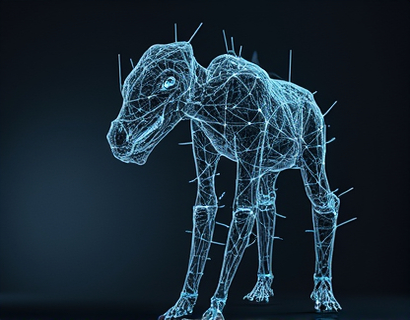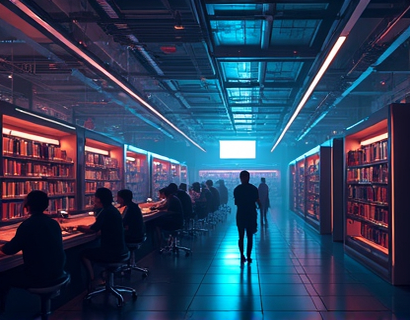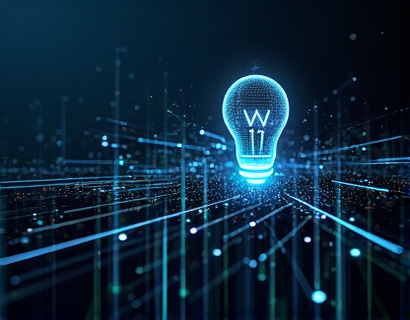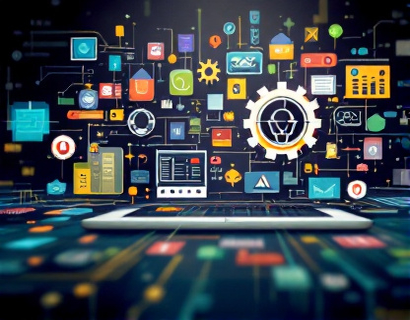Exploring the Future: AI-Driven Nanobots and Their Impact on Various Fields
The advent of nanotechnology has opened new frontiers in science and engineering, with nanobots emerging as a pivotal element in this revolutionary field. These microscopic machines, designed to perform specific tasks at the nanoscale, hold immense potential across various sectors including medicine, manufacturing, environmental conservation, and more. To demystify this complex yet fascinating technology, an AI-powered chat platform has been developed, offering specialized and verified information on nanobots accessible to users of all ages. This platform is particularly noteworthy for its dual approach, providing in-depth content for educational institutions and students while ensuring a safe and educational experience for children and young learners.
Understanding Nanobots: A Brief Overview
Nanobots, or nanorobots, are tiny robots measured in nanometers, the billionth part of a meter. Their size allows them to interact with matter at the molecular and atomic level, enabling applications that were once confined to the realm of science fiction. In medicine, for instance, nanobots could be designed to target and destroy cancer cells with precision, minimizing harm to healthy tissue. In manufacturing, they could revolutionize production processes by assembling products at the molecular level, leading to unprecedented precision and efficiency.
AI-Powered Chat Platform: A Gateway to Nanobot Knowledge
The AI-powered chat platform serves as a comprehensive resource hub for all things related to nanobots. Utilizing advanced natural language processing, the chat interface understands and responds to user queries with accurate and detailed information. This platform stands out by offering content that is not only verified for accuracy but also tailored to different user groups, ensuring that information is accessible and engaging for everyone, from seasoned professionals to curious students and children.
Specialized Information for Educators and Students
For educational institutions and students, the platform provides a wealth of resources that align with academic curricula. Detailed articles, interactive modules, and multimedia content cover the basics of nanotechnology, the science behind nanobots, their potential applications, and ethical considerations. These resources are designed to complement classroom learning, offering a deeper dive into topics that spark students' interest and encourage further exploration. The platform also features case studies and real-world examples, illustrating how nanobots are being developed and utilized in various industries.
Child-Friendly Content: Making Complex Technology Accessible
Recognizing the importance of early education in STEM fields, the platform includes a specially designed section for children and students. This child-friendly version simplifies complex concepts using age-appropriate language, engaging visuals, and interactive elements. Young learners can explore the basics of nanobots through fun quizzes, animated videos, and interactive simulations. The content is carefully curated to be both educational and entertaining, fostering a love for science and technology from an early age.
Interactive Learning: AI Chat Interface for In-Depth Exploration
The AI chat interface is a cornerstone of this platform, offering an interactive and personalized learning experience. Users can engage in conversations with the AI, asking questions about nanobots, their applications, and the latest research developments. The AI's capabilities extend beyond simple Q&A, providing explanations, examples, and additional resources based on the user's level of understanding and interest. This dynamic interaction ensures that users, regardless of their background, can gain a comprehensive understanding of nanobots and their significance.
Verified Content: Ensuring Accuracy and Reliability
One of the key features of this platform is its commitment to content verification. All information provided is rigorously checked against credible sources, including peer-reviewed journals, official publications from research institutions, and statements from industry experts. This ensures that users receive accurate and up-to-date information, free from misinformation. The verification process is ongoing, with the platform regularly updating its database to reflect the latest advancements and discoveries in the field of nanobots.
Applications Across Industries: A Closer Look
The potential applications of nanobots are vast and varied, impacting multiple industries in transformative ways. In healthcare, nanobots could revolutionize diagnostics and treatment by delivering drugs directly to diseased cells, performing minimally invasive surgeries, and monitoring health in real-time. In environmental conservation, they could be used to clean pollutants from water and air, break down plastic waste, and monitor ecosystems at a microscopic level. The manufacturing sector stands to benefit from increased precision and efficiency, while the field of electronics could see the development of more powerful and compact devices.
Medical Breakthroughs: Nanobots in Healthcare
In the medical field, nanobots represent a promising frontier for treating diseases and improving patient care. One of the most exciting applications is targeted drug delivery, where nanobots can be programmed to seek out and destroy cancer cells while leaving healthy tissue unharmed. This precision reduces side effects and increases the effectiveness of treatments. Additionally, nanobots could be used for early detection of diseases by identifying biomarkers at the molecular level, enabling timely intervention. The platform provides detailed insights into current research and clinical trials, highlighting the progress being made in this area.
Environmental Impact: Cleaning and Conservation
Nanobots also hold significant promise for environmental conservation and remediation. They can be designed to target and neutralize pollutants, such as heavy metals and organic contaminants, in water and soil. For example, nanobots could be deployed to break down plastic waste in oceans, helping to mitigate the global plastic pollution crisis. The platform offers comprehensive information on these applications, including case studies and the scientific principles behind them, making it easier for users to understand the potential environmental benefits.
Ethical Considerations and Future Directions
As with any powerful technology, the development and use of nanobots raise important ethical questions. Issues such as safety, privacy, and the potential for misuse must be carefully considered. The platform addresses these concerns by providing a balanced view of the benefits and risks associated with nanobots. It also explores the ethical frameworks and regulations being developed to guide the responsible use of this technology. Looking ahead, the platform discusses potential future directions in nanobot research, including advancements in materials science, energy sources, and control mechanisms.
Engaging the Next Generation: Encouraging STEM Education
By making complex topics like nanobots accessible to young learners, the platform plays a crucial role in fostering interest in STEM fields. Interactive content and engaging activities encourage children to think critically and creatively about science and technology. This early exposure can inspire the next generation of scientists, engineers, and innovators, contributing to the continued advancement of nanotechnology and its applications. The platform also provides resources for educators, offering lesson plans and teaching guides to integrate nanobots into their curricula.
Conclusion: Embracing the Nanobot Revolution
The integration of nanobots into various industries represents a significant leap forward in technology, with the potential to solve some of the world's most pressing challenges. Through an AI-powered chat platform, this knowledge is made accessible to everyone, breaking down barriers to understanding and fostering a broader appreciation for the science behind nanobots. Whether you are a student, educator, or simply curious about the future, this platform offers a valuable resource for exploring the exciting world of nanobots. Embrace the nanobot revolution and join the conversation on how this technology can shape a better future for all.










































